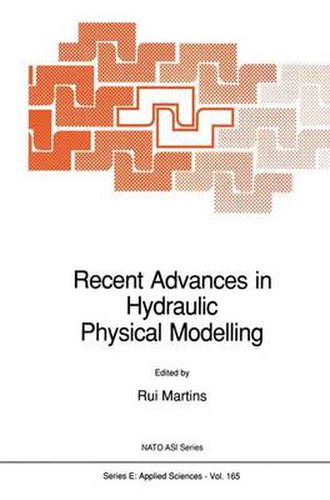Readings Newsletter
Become a Readings Member to make your shopping experience even easier.
Sign in or sign up for free!
You’re not far away from qualifying for FREE standard shipping within Australia
You’ve qualified for FREE standard shipping within Australia
The cart is loading…






This title is printed to order. This book may have been self-published. If so, we cannot guarantee the quality of the content. In the main most books will have gone through the editing process however some may not. We therefore suggest that you be aware of this before ordering this book. If in doubt check either the author or publisher’s details as we are unable to accept any returns unless they are faulty. Please contact us if you have any questions.
The growing use of mathematical models in hydraulics has not made physical models obsolete. They keep pace with mathematical models and in some cases make progress in conjunction with them Physical models continue to be developed: more precise use of similitude criteria, better knowledge of scale effects, new and more complex types of model,use of various artifices, more ade- quate instrumentation, automation of the operation of model- all these pOint to that development. What was needed was to make a survey of the situation, and this was the principal aim of the NATO Advanced Study Institute on Recent Advances in Hydraulic Physical Modelling, which took place on the premises of the Laborat6rio Nacional de Engenharia Civil (LNEC) in Lisbon, Portugal, from 4th to 15th July 1988, and of which this book is one of the main outputs. It is divided into 11 chapters, corresponding to 28 lectures that cover five areas: fundamentals of physical modelling, river models, hydraulics of structures, maritime hvdraulics and densi ty models. – Hodelling is obviously dependent on the knowledge of the phe- nomena that are being modelled. This book is therefore also a book on hydraulic engineering in general and not only on phv- sical, modelling. The text also refers to mathematical modelling, experimental methods in hydraulics and observation of nature and prototypes.
$9.00 standard shipping within Australia
FREE standard shipping within Australia for orders over $100.00
Express & International shipping calculated at checkout
This title is printed to order. This book may have been self-published. If so, we cannot guarantee the quality of the content. In the main most books will have gone through the editing process however some may not. We therefore suggest that you be aware of this before ordering this book. If in doubt check either the author or publisher’s details as we are unable to accept any returns unless they are faulty. Please contact us if you have any questions.
The growing use of mathematical models in hydraulics has not made physical models obsolete. They keep pace with mathematical models and in some cases make progress in conjunction with them Physical models continue to be developed: more precise use of similitude criteria, better knowledge of scale effects, new and more complex types of model,use of various artifices, more ade- quate instrumentation, automation of the operation of model- all these pOint to that development. What was needed was to make a survey of the situation, and this was the principal aim of the NATO Advanced Study Institute on Recent Advances in Hydraulic Physical Modelling, which took place on the premises of the Laborat6rio Nacional de Engenharia Civil (LNEC) in Lisbon, Portugal, from 4th to 15th July 1988, and of which this book is one of the main outputs. It is divided into 11 chapters, corresponding to 28 lectures that cover five areas: fundamentals of physical modelling, river models, hydraulics of structures, maritime hvdraulics and densi ty models. – Hodelling is obviously dependent on the knowledge of the phe- nomena that are being modelled. This book is therefore also a book on hydraulic engineering in general and not only on phv- sical, modelling. The text also refers to mathematical modelling, experimental methods in hydraulics and observation of nature and prototypes.